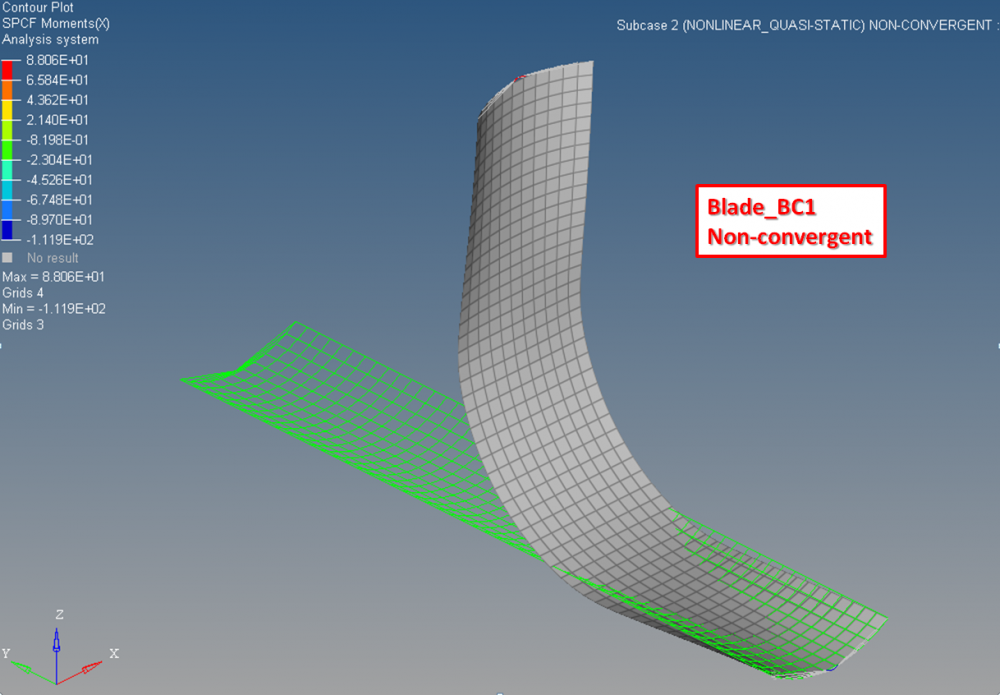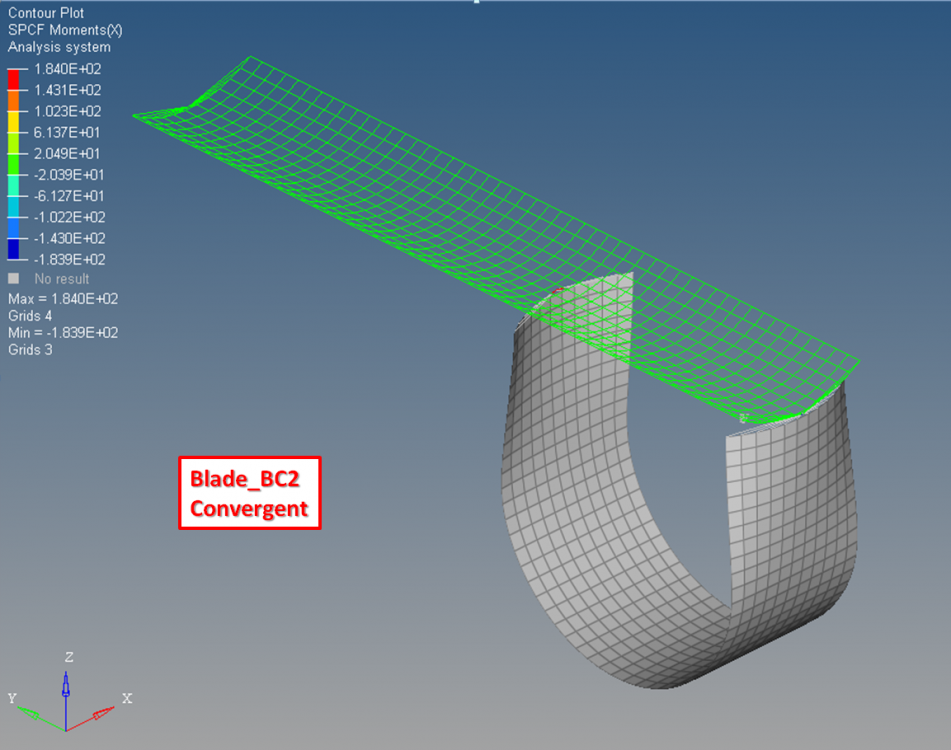Dear all,
I am working on an nonlinear quasi-static (NLSTAT) analysis of a curved blade (see attached Input-Files) in 2017.2 Student Edition. CQUAD4 Elements and PSHELL property are used. I want to study the bending of this curved blade through 180°. It is of interest to me how high the SPC-Forces are at the two end nodes (nodes at which RBE2-Elements come together). I am aware that this is quite a complex problem with nonlinear geometry and flattening of the curved blade as it gets bent so I am looking for help with the following issue.
The attached models are basically the same in all respects except the boundary conditions. 'Blade_BC1' is clamped at one end node (Node 3; all DOF=0), while the other end node has DOF1,4,5,6 constrained (Node 4; DOF...=0) and an SPCD applied as a rotation of 180° about the x-axis (DOF4=3.142). 'Blade_BC2' has one end node (Node 3) that is constrained in all DOFs and has an SPCD applied as a rotation of -90° about the x-axis (DOF4=-1.571). The other end node (Node4) is constrained in all DOFs but DOF2 (translation in y-direction is possible) and has an SPCD applied as a rotation of 90° about the x-axis (DOF4=1.571). Analysing 'Blade_BC1' leads to nonconvergence (see first screenshot and out-file), analysing 'Blade_BC2' is no problem at all with full convergence (see second screenshot).
<?xml version="1.0" encoding="UTF-8"?>
<?xml version="1.0" encoding="UTF-8"?>
From a physical/mechanical perspective both blades (Blade_BC1 and Blade_BC2) are experiencing pure bending and it should not make a difference if one uses boundary conditions BC1 or boundary conditions BC2. That is why I am wondering how one model fails to converge while the other converges without troubles. Yet, as the only thing that differentiates the two models, the boundary conditions must be the deciding factor over convergence.
Can someone give me advice as to which paramaters to change in the Blade_BC1-Model so that it also converges? For more detail please have a look at the attached input-files. To study non-convergence I have also added the out-file of Blade_BC1. As always, I am very grateful for any help.
Cheers,
cfuser
PS: Don't be confused by the linear static subcase that comes before the nonlinear subcase. This was created for verification purposes.
Unable to find an attachment - read this blog